Today, in the construction of country houses, someone uses modern materials and ...
|
|
It is difficult to imagine a modern country house without a canopy. This architectural ... |
The use of cement grouts is associated with the processing of joints between the tiles and giving them ... |
Laminate for parquet: photo, laying instructions
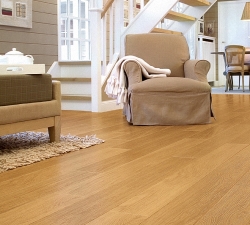
An important element of the design of a living or office space is a noble flooring for the floor, for example, a laminate laid in the form of a parquet. Until recently, it was not considered a worthy alternative to artistic parquet made of natural wood. A modern parquet laminate is a beautiful and practical coating that is convenient in installation and more economical during repair. The grace of drawings and the abundance of woody shades allows you to imitate exquisite ornaments of a set of setting from expensive varieties of wood. They were available only to nobles and kings for laying flooring for balls in palaces. Today, such beauty is available to everyone.
Table of contents:
- Preparation of the floor for laying a laminate and parquet board
- Dismantling of the old coating
- Choosing a laminate with styling for art parquet
- Square art laminate: Features of choice
- The difference in the mounting of a square laminate
Preparation of the floor for laying a laminate and parquet board
The laminate for parquet is an opportunity to recreate the respectability of the palace or aristocracy of the classic interior in their office or in the apartment. Thanks to this method of laying ready -made lamellas, you can enjoy the beauty of a pre -thought -out pattern for many years. Square tiles with a set pattern are laid in a longitudinal-transverse way, forming a laminate for parquet photo:
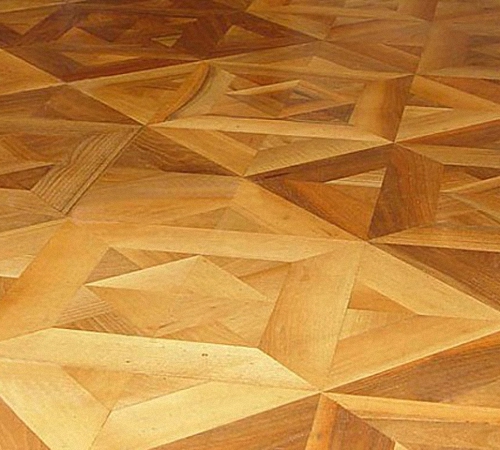
Despite the well -thought -out system of lateral locks and champs on each lamella, facilitating styling, it is important to observe several important conditions. For example, before laying a parquet pattern with a laminate, it is important to prepare and align the base where the square (or other form) lamellas will be laid. This requires dismantle the previous coating, remove the old parquet or align the floor.
Attention: do not hope that small irregularities will close the substrate, and you can do without alignment. Even small defects are important to eliminate, because a slight tubercle or hole can ruin the whole impression!
If there is a significant difference in height between the walls, you will have to level the floors with lags or screed. Sometimes a plywood floor is required, then you can do without a substrate. The screed is needed not only for the substrate, but also the waterproofing to protect the lamella from swelling. This is especially important if the outer angle in the room is diverse.
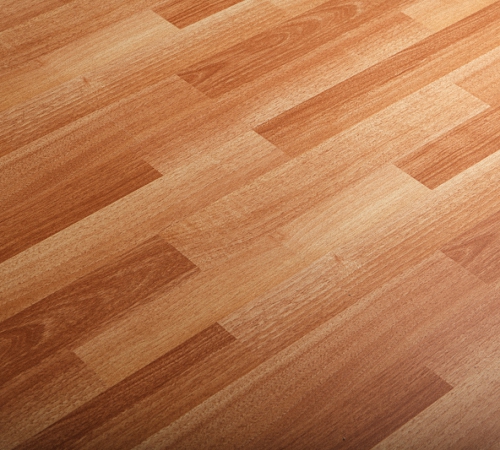
Dismantling of the old coating
Do not leave the old parquet under a new laminate, for sure, for a long service life, he lost the perfect horizontal. If it was polished and checked by the level, then it is still better to spread the substrate on a perfectly even surface and start laying the laminate under the parquet. But when there is a need to dismantle a part of an old base, it is better to remove everything at once.
With a neat and gentle dismantling of the old coating and thoroughly aligning the floor by self -leveling mixture or screed, minimal time and energy expenses will be. The old parquet and wooden floor are disassembled according to fragments, dividing in the places of connection. The tile is knocked down with a chisel and a hammer, then the remaining solutions or glue is cleaned with a spatula.
The easiest way to dismantle old carpet and linoleum. And if it was laid on a coating adjusted horizontally, such as plywood or chipboard, it can be left. It is enough to use a simple spatula and a chisel to remove the skirting board, spins and other fixing elements. Then the adhesive base is pulled and protected by a spatula to tear off the coating to be replaced. After that, the influxes of glue are removed and dry construction garbage is vacuumed.
Self -leveling mixtures are used for a slight difference or small defects of the base. Serious floor defects are eliminated by screed. For this, a dry mixture of brand 150 or junis, glims and vethonitis are suitable. They dry faster than ordinary cement. The dry screed Knauf, which dries faster than others, is ideal. It can be used on top of small -fractional expanded clay and then level with gypsum fiber.
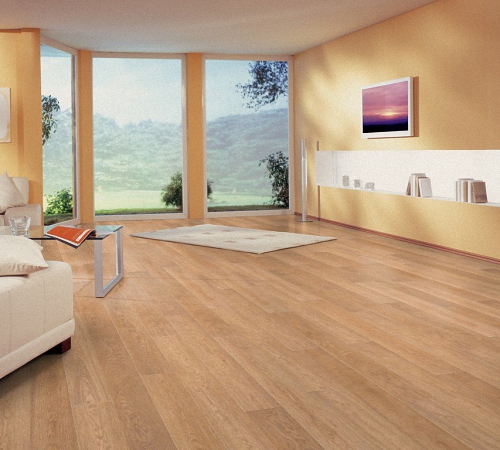
If on top of the leveling mixtures there is a desire to lay the plywood, then it will finally eliminate all small irregularities and give the floor additional rigidity. This is done under a varnished parquet board, where the slightest irregularities of styling are displayed in daytime or evening light. Next, lick the substrate and move on to laying a laminate under an artistic parquet.
Attention: the laminate cannot be laid directly on the concrete base, a layer of polyethylene film is necessarily needed as vapor barrier, since the screed always gives residual humidity. It is also recommended to use a sound -absorbing substrate, on top of which the installation of decorative lamellas is carried out.
Tip: Do not stir up for high -quality preparation of the base for laying a laminated parquet. This guarantee is that it will be laid impeccably and will last many years. A good option is moisture -resistant plywood. The range of substrates includes polystyrene, foamed polyethylene, a cork, etc. Parkolag substrate is considered ideal for this type of floor covering, which will provide additional ventilation of the screed.
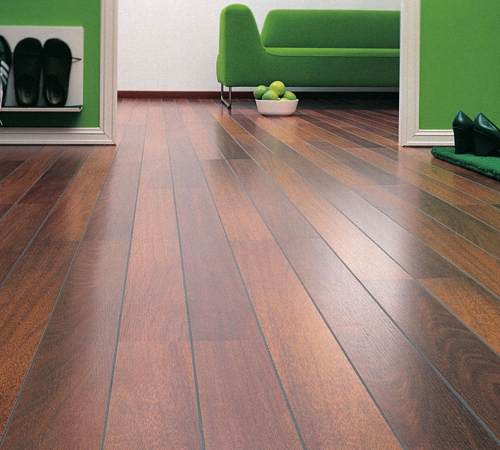
After that, you can purchase a tile that is kept in the room in which it should be styled. For acclimatization of art lamellas, 2-3 days are enough. They will have the same temperature and humidity as the environment. However, you should not do this before the substrate is laid, that is, while the base dries.
Attention: an art laminate is not recommended to be laid in rooms with high humidity (pool, bathroom, sauna), even if it seems to you that there is ordinary air humidity and good ventilation. Use only waterproof laminate, with a high content of resin at the base of the lamella!
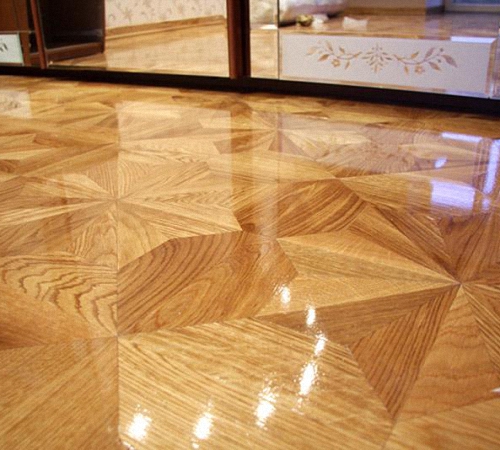
Choosing a laminate with styling for art parquet
Today, the art laminate is very in demand, and this is understandable by the simplicity of styling and the beauty of the drawing. A natural analogue is not only much more expensive, but also does not give such a variety of a palette that is available in the decor of the parquet laminate. The lamellas have a well -thought -out clutch system for quick installation.
The art laminate happens:
- matte;
- half -machine;
- varnish.
The varnished surface looks very respectable and resembles the palace halls. However, he is afraid of scratches and the slightest irregularities. A high -quality laminate of the 33rd class already has a strong multilayer coating of protective varnish, but they are not so intensively shuttered with reflections. However, it is most in demand for creating elite interiors of various ornaments and shades.
An exclusive laminate for art parquet, produced in Germany, Belgium, Russia or China, is available today in the domestic market in a large assortment. The most prestigious brands whose collections look great in the interior of Vintage, Alloc, Quick Step, Floor STEP Art, Versale, Zigart, etc.
Attention: Before buying the start of installation, study all the provisions of the instructions! Check the possibility of guarantees and completeness of the party, since with the same figure the shade of the batch does not always coincide.
Most of the listed brands of laminate for artistic parquet prices are quite acceptable, samples can be viewed in Internet catalogs. They are suitable for residential and commercial premises.
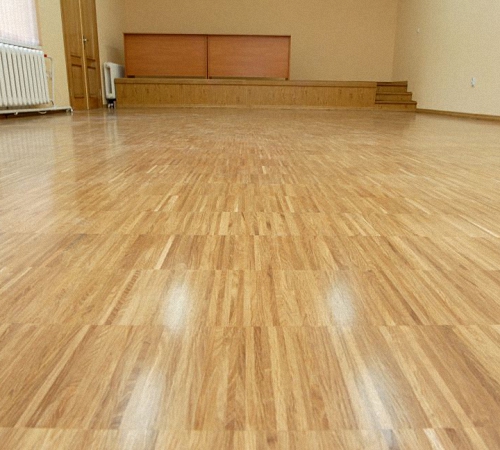
Main recommendations:
1. It is undesirable to lay laminate under parquet, where the relative humidity of the air exceeds 60%, for example, where there are many open aquariums or exotic plants that require spraying and frequent irrigation. Artistic lamellas also do not like significant fluctuations in temperature, that is, over 16-26 ° C.
2. A high -quality expensive parquet laminate cannot be laid on a screed without hydraulic protection and substrates. The flooring is recommended for a prepared, perfectly even base.
3. Lameli cannot be fixed to the wooden base with nails or other method, but only by a floating way where fragments are joined using a castle system.
4. In the plinth, it is important to observe a small gap so that the wood can respond to temperature changes and a change in air humidity. This is the so -called temperature gap.
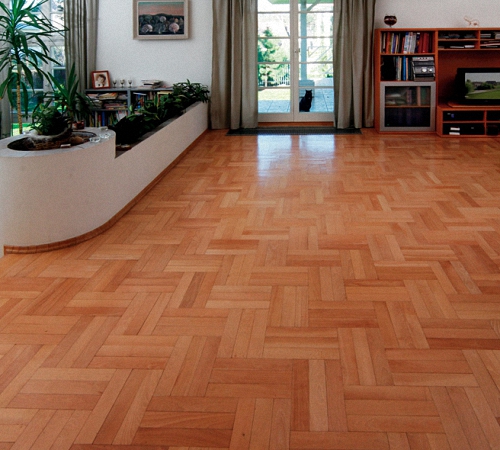
Square art laminate: Features of choice
A square laminate (under parquet) is an artistic version of rectangular lamellas, having a special pattern for obtaining an ornament when laying out. Each lamel has 3 layers:
- the main, halva of shavings and tarry substances for durability and strength;
- protective external, for the preservation of a decorative appearance;
- decorative, with a pattern responsible for the aesthetics of appearance;
- stabilizing lower layer to protect against deformation from below.
Each option for a laminate collection for a square parquet is able to create an exclusive pattern for any room that can be individually selected for each interior style:
- classic;
- renaissance;
- palace;
- english;
- country;
- ethno;
- fuzhn, etc.
Classic square lamellas with an ornament pattern for parquet is a guarantee of the exact coincidence of the fragments of the picture when the locking system is combined. Sometimes it is advisable to combine lamellas from different collections of the same size for more variability of the ornament.
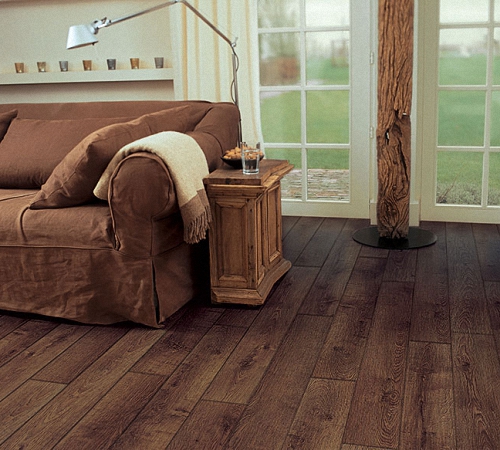
Elite art lamellas visually cannot be distinguished from natural parquet. They can be laid and combined in different ways, alternating squares with rectangular lines in the form of frames around the perimeter or with mortise plant ornaments.
In some collections, the lamella is with a V-shaped chamfer, imitating a small recess along the perimeter. You can buy such a laminate for parquet, it creates the illusion of wood with a characteristic connection of the parquet bar.
Squares of an art laminate under parquet are much easier to lay, as well as to take care of it. Unlike natural parquet, he is not afraid of accidentally spilled fluid and does not require lacquering or polishing, not susceptible to cleaning and detergents for cleaning. It does not remember under the legs of furniture and heels. Experts also note that the square lamellas of most manufacturers differ:
- impact resistance;
- durability;
- fire safety;
- wear resistance.
In construction supermarkets, buyers admire how beautiful such a laminate is, and also note the plausibility of the Lamelian texture. Although in fact, a decorative layer of lamella is a woody pattern printed on paper, which is glued to halva chipboard and covered with protective varnish. But they are chosen due to high decorativeness even eminent designers for the development of a classic, modern or palace interior.
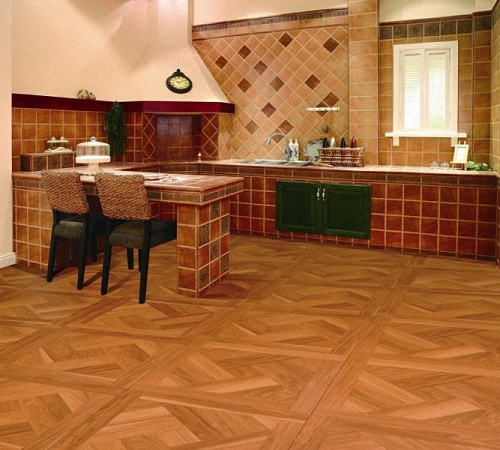
The difference in the mounting of a square laminate
The peculiarity of laying a laminate under a square -type parquet is that special locking systems should be associated otherwise, like ceramic tiles, forming crosses. Such a thoughtful connection provides reliability of installation and the perfect surface. But it is important to comply with some conditions:
- carefully monitor the layout of the picture;
- leave a gap of about 1 cm near the walls under the baseboard;
- it is better to do work from left to right and from the corner far from the door.
We start with measurements so that the cutting of the lamellas is minimal. For example, if 1-3 cm does not reach or remain superfluous, then we align due to gaps hidden under the baseboard. The perfectly laid parquet laminate is absolutely symmetrical. But if it does not come out, then you can carefully and accurately make one wall, and from the corner of the opposite to the door. And it is better to hide the cut lamellas under the wall along which the furniture should stand.
Do not rush to spit the lamellas if you have not made sure how the pattern will look when there are options. First, lay out 1-2 sq.m. On the floor for preliminary visual assessment. If the laying is with a shift for half a lamp, then withstand the same interval so that the seams coincide through a row, as in brickwork, without a shift.
Attention: when laying an art laminate, you need a tool for cutting a laminate, a protective mask or glasses.
They begin to cut them according to marking, putting the lamelly down with the decorative side. This is usually done with a special electric saw equipped with a vacuumber, or another suitable power tool. You also need a hammer and a bar to knock out a fitted laminate.
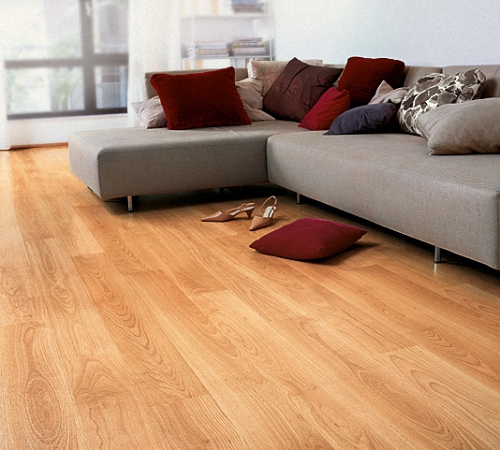
Sometimes an art laminate is laid diagonally for a special design effect, in other cases, the seams should lie down in parallel to the light source.
The laying of the first row begins from the corner, observing the gap under the baseboard about 1cm. All collected lamellas are tapped for a denser connection. First, we collect one line, then we fasten the rest of the fragments to it, connecting at the edges to the cutting lamellas.
Attention: if communications and pipes come out of the floor, then these holes must be drilled with a special tool according to the template that we make on a piece of cardboard. The finished hole can be additionally closed with a decorative element or the edges are thrown.
To complete the installation, the skirting board is required, which is selected by the color and texture of the laminate. At the corners, do not forget to put the special loads of the share of external and internal angles. And a special profile is used on the stairs. In the adjacent room, it is also important to make a bordering temperature seam and close it with a transition skirting board or a low sloping breed.
